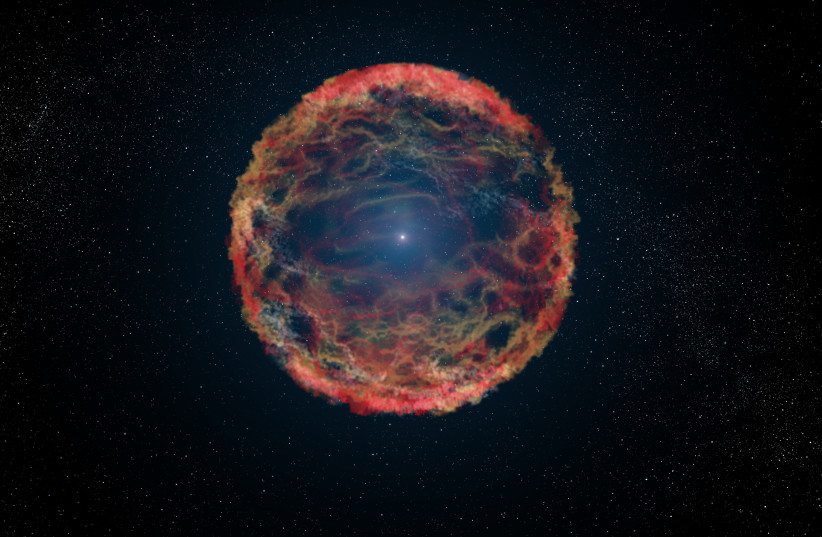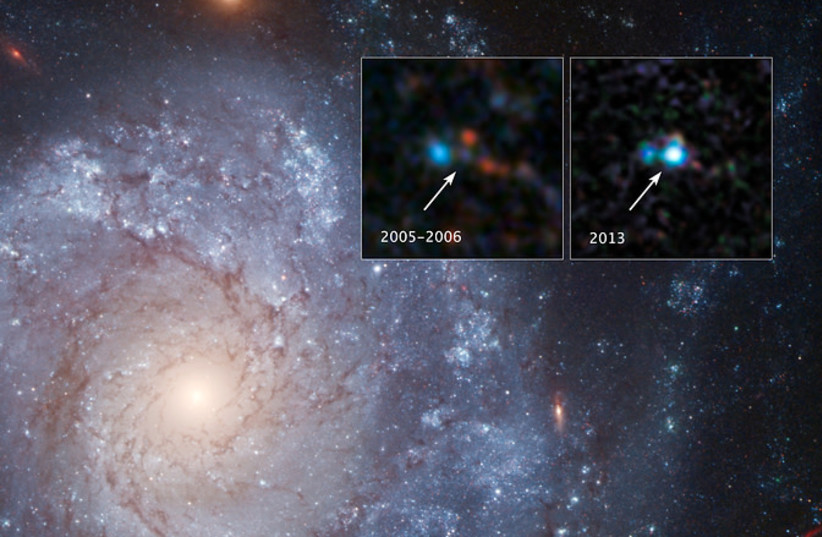A thermonuclear supernova in a white dwarf star is meant to be the end for the star as it is completely blown apart, with the idea of one surviving being completely unheard of.
And yet, scientists seem to have discovered exactly, with a star surviving in a manner one researcher referred to as being reminiscent to Star Wars' iconic Jedi master Obi-Wan Kenobi.
The findings of this study, published in the peer-reviewed academic periodical The Astrophysical Journal and presented at the 240th meeting of the American Astronomical Society, has surprising new revelations about the stars, supernovae and the force that binds it all together.
“This star surviving is a little like Obi-Wan Kenobi coming back as a force ghost in Star Wars.”
Study co-author Andy Howell
<br>Death (of a) Star?
To understand exactly what's going on, it's important to understand what a supernova is and what a white dwarf star is.

A supernova is essentially an exploding star. It is one of the fates for a star when it reaches the end of its life cycle, no longer able to produce energy in its core.
Stars of all kinds are fueled by this energy production in their cores, which sees energy made by nuclear fission fusing lighter elements to form heavier ones. It is this process that keeps the star hot, allowing gases to expand while simultaneously drawing its mass toward the core in a delicate gravitational balance.
When a star can no longer produce this energy, a process that takes millions or billions of years, one of two things happen. In the case of stars around the size of our Sun or smaller, it will result in the star collapsing to form a white dwarf.
This is what happens when a star is too small to form into a black hole or a neutron star.
A white dwarf star is, essentially, a remnant of a stellar core. The mass of a Sun condensed into an object around the size of the Earth. It has a faint level of luminosity that comes from residual energy and does not come from any fusion, since no white dwarfs do that and therefore have no source of energy.
Despite this, they still have a lot of residual energy left, and it will still take time for it to actually cool down, eventually becoming so cold that it crystallizes and becomes a black dwarf. However, this is still theoretical and in fact, scientists think that, judging by how long this entire process should take, no black dwarfs should exist anywhere in the universe.
<br>Become one with the force
That isn't to say white dwarf stars are immortal. Rather, scientists are sure that there is a way for them to die, and that would be in a certain type of supernova: A thermonuclear supernova.
Also known as a Type Ia supernova, this type of supernova occurs in star systems where two stars orbit each other (known as a binary star system), though specifically when one of them is a white dwarf.
What exactly happens is unclear, but a prominent theory is that the white dwarf star essentially begins gathering the mass and matter from the other star in the system in a process known as accretion.
This, in turn, results in the star becoming too heavy after crossing a threshold scientists have dubbed the Chandrasekhar limit and eventually triggering a thermonuclear reaction. This ignites the once dead core and leads to a massive cosmic explosion that completely destroys the star.
This type of supernova is nothing new. In fact, our scientific understanding of them has contributed greatly to what we know about the universe as a whole.
It was through Type Ia supernovae that we were able to determine that the universe expands at an ever-accelerating rate. This also ties in with what we know about dark energy, the enigmatic force behind universal expansion.
There is also another variation of this type of supernova, the Type Iax supernova. These are, essentially, just a weaker version, being slower and less powerful. This also means they are less luminous, and might just be what happens when a Type Ia supernova fails.
It is theoretically possible, then, that may be the outcome of such a supernova would be different. Scientists have theorized such an idea before, where a star remains after not all of the stellar matter is dispersed by the explosion. The resulting stellar body is something scientists have in the past referred to as a "zombie star."
But this is purely hypothetical, right?

Perhaps the archives are incomplete?
Actually, that seems to be the case.
The researchers behind the study examined SN 2012Z, a supernova in the NGC 1309 galaxy some 120 million light-years away.
This galaxy had been studied in depth already by NASA's Hubble Space Telescope for years before the supernova was discovered in 2012.
After it happened, data from Hubble in 2013 was compared with older images in an attempt to identify where the supernova originated and, therefore, which star exploded – something that was successfully accomplished.
And that was when the discovery was made.
<br>This is where the fun begins
Now, as noted by lead author Curtis McCully of UC Santa Barbara and Las Cumbres Observatory, there were a couple of possible outcomes they were expecting when going over the latest data from Hubble. Either it would be gone, as was expected, or it would still be there just as it was before – the latter meaning this was not the star they were looking for.
But what they found was something else entirely. Not only was the star still there, but it was bigger and brighter than before.
<br>That's not the white dwarf way!
As white dwarfs somewhat paradoxically are larger the lighter they are, there is a possible reason for this.
Basically, when the supernova occurs, it is supposed to blow everything away, leaving nothing behind. But this supernova wasn't strong enough, so rather than everything being blown away, some of it just went back to where it came from. And because there is less mass than there was before, the star is now bigger and brighter.
Interestingly, this also could possibly be related to the Chandrasekhar limit. While that theory has been used to measure the limit in size of a white dwarf, it isn't something everyone agrees on. In fact, over the years, many supernovae were discovered that didn't reach the limit at all, and yet still exploded.
Now, many astronomers aren't even sure if any star ever got to the limit before the supernova began. But SN 2012Z may have done exactly that. It may have reached the limit and become something more.

“This star surviving is a little like Obi-Wan Kenobi coming back as a force ghost in Star Wars,” co-author Andy Howell, adjunct professor at UC Santa Barbara and senior staff scientist at Las Cumbres Observatory, explained in a statement.
“Nature tried to strike this star down, but it came back more powerful than we could have imagined. It is still the same star, but back in a different form. It transcended death.”
Despite how much we know about supernovae, there is still much we don't understand. Indeed, there are many questions. But chief among them is, again, what happens in these supernovae?
Growing to the Chandrasekhar limit before exploding seems to be possible, but the explosions themselves are still weaker. So how does this happen? How do Type Iax supernovae occur? What actually makes a Type Ia supernova successful?
Perhaps the success or failure of a supernova, though, is only true from a certain point of view.
